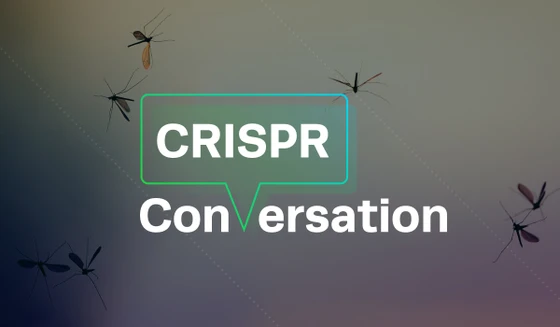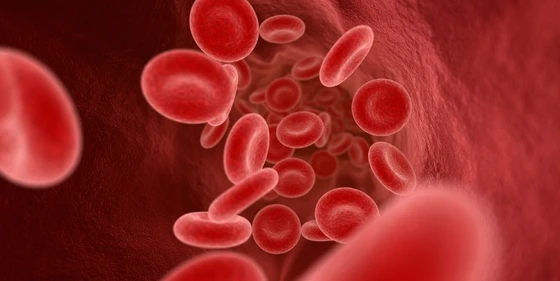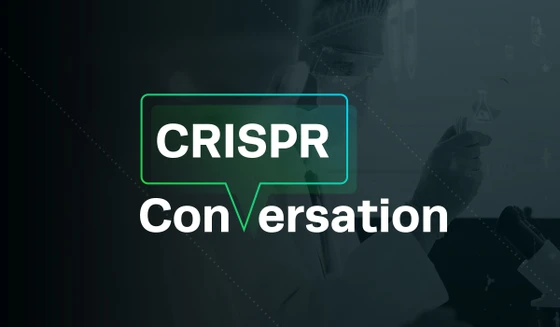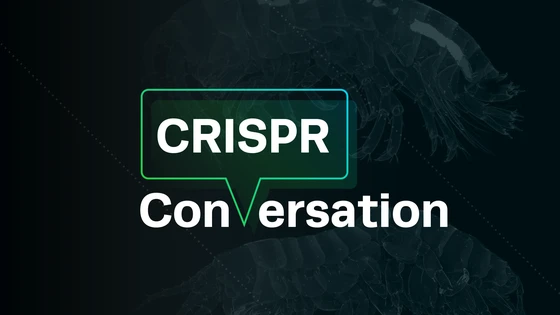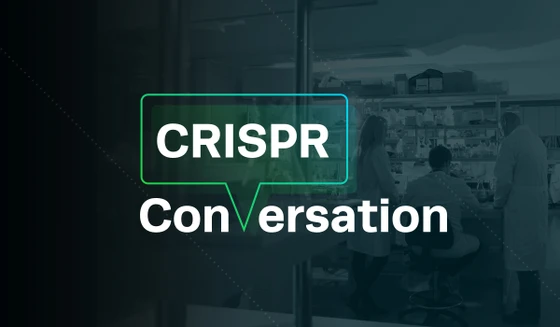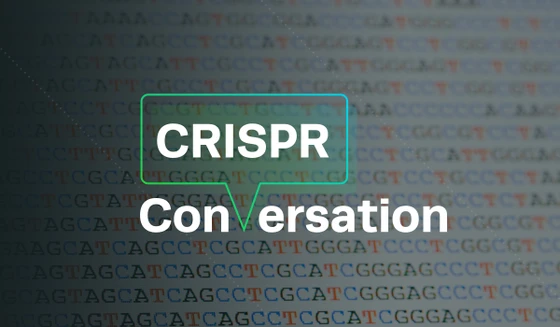CRISPR is quickly being adopted as the preferred genome editing tool for a wide variety of applications. One application that holds a lot of potential is gene drives, self-perpetuating genetic elements that bypass the rules of Mendelian genetics and quickly spread through populations. Gene drives can potentially be used to spread beneficial genes through wild populations or suppress populations of disease-carrying insects or agricultural pests.
Dr. Anna Buchman, a research scientist in the lab of Dr. Omar Akbari at the University of California, San Diego (UCSD), is conducting exciting research on gene drives. We talked to her about her projects and how CRISPR can be used to control populations of problematic insects.
Using CRISPR-Cas9 Homing Drives to Cheat Regular Inheritance
CRISPR has revolutionized the approach to disease control. CRISPR-enabled gene drives, for instance, have received a lot of attention recently, particularly in the fight against malaria. Researchers have developed novel ways of engineering CRISPR drives in different insects to curb their population for disease control.
Dr. Anna Buchman primarily focuses on building different types of gene drives based on their application. One interesting example is the CRISPR-Cas9-based homing drive, wherein a homing cassette bearing the Cas nuclease and guide RNA copies itself into the target DNA. She terms the consequent germline conversion of heterozygotes to homozygotes “cheating regular inheritance.” Dr. Buchman has tested gene drives in Zika-transmitting Aedes mosquitoes, as well as in Anopheles mosquitoes that transmit malaria.
Dr. Buchman compared Synthego’s sgRNA and cr:tracrRNA from another company for her work. “The two-piece [guide RNA] system took more time to anneal the two pieces to form the complexes. We now use modified synthetic sgRNAs from Synthego.” said Dr. Buchman.
Read on to learn about her interesting research in this article ahead.
Interview with Anna Buchman, Gene Drive Scientist at UCSD
Brittany Enzmann: Tell me a little bit about your background.Anna Buchman: I am currently a Research Data Analyst in Omar Akbari's lab at UC San Diego. I got my Bachelors and Masters from Sam Houston State and then my Ph.D. from California Institute of Technology (CalTech), where my current PI, Omar, was a postdoc.
I spent most of my graduate career developing gene drives in insects, particularly in pests like mosquitoes. After a short foray into patent law, I continued in research and have been traveling with Omar as he has progressed through his career at UC Riverside and now at UC San Diego. I have helped Omar run his lab and develop gene drives that can be used for controlling pest insect populations.
Anna Buchman: I am currently a Research Data Analyst in Omar Akbari's lab at UC San Diego. I got my Bachelors and Masters from Sam Houston State and then my Ph.D. from California Institute of Technology (CalTech), where my current PI, Omar, was a postdoc.
I spent most of my graduate career developing gene drives in insects, particularly in pests like mosquitoes. After a short foray into patent law, I continued in research and have been traveling with Omar as he has progressed through his career at UC Riverside and now at UC San Diego. I have helped Omar run his lab and develop gene drives that can be used for controlling pest insect populations.
BE: What first got you interested in gene drives?AB: I knew I wanted to get my doctorate and looked into the potential avenues of research that I could pursue. I like working in genetics, and I especially like the idea of genetic engineering. Working on gene drives involves figuring out how to build something inspired by a natural idea.
To be able to do genetic engineering, and at the same time, to focus on a subject that has such far-reaching implications, is really rewarding. Gene drives can be developed and implemented for issues like controlling vectors that transmit human diseases. For example, gene drives can be developed for mosquitoes that transmit malaria, dengue virus, and Zika virus.
If gene drives work, they could have revolutionary implications for how we manage these types of diseases. Because vector-borne diseases affect so many people throughout the world, it's really cool to be part of a research team with such far-reaching implications.
AB: I knew I wanted to get my doctorate and looked into the potential avenues of research that I could pursue. I like working in genetics, and I especially like the idea of genetic engineering. Working on gene drives involves figuring out how to build something inspired by a natural idea.
To be able to do genetic engineering, and at the same time, to focus on a subject that has such far-reaching implications, is really rewarding. Gene drives can be developed and implemented for issues like controlling vectors that transmit human diseases. For example, gene drives can be developed for mosquitoes that transmit malaria, dengue virus, and Zika virus.
If gene drives work, they could have revolutionary implications for how we manage these types of diseases. Because vector-borne diseases affect so many people throughout the world, it's really cool to be part of a research team with such far-reaching implications.
Cell Engineering 101
CRISPR has ignited a revolution. Although it’s a relatively recent discovery in the history of biotechnology, CRISPR has quickly become a standard laboratory tool and cell engineering is transforming research. One of the most widely used applications of CRISPR is knocking out specific genes in cell lines to interrogate gene function.

BE: What gene drive mechanisms do you think hold the most promise?AB: I don’t think that there is really a clear answer to that. All of them have their place, depending on the context that you're trying to use them in.
I think a lot of the focus has been on CRISPR-Cas9 homing drives, which is great because they're easy to build in any organism. CRISPR has revolutionized the way that we can build homing drives. There is this appeal of actually being able to engineer CRISPR drives across many types of different insects. CRISPR works in pretty much everything every species we have tried it in, so it's a very portable system.
But for me, in particular, a lot of my work is focused on building different types of gene drives, such as translocation-based and Medea-based gene drives. I think we should develop all of them and then pick and choose from our toolbox depending on the situation that we're trying to use them in.
AB: I don’t think that there is really a clear answer to that. All of them have their place, depending on the context that you're trying to use them in.
I think a lot of the focus has been on CRISPR-Cas9 homing drives, which is great because they're easy to build in any organism. CRISPR has revolutionized the way that we can build homing drives. There is this appeal of actually being able to engineer CRISPR drives across many types of different insects. CRISPR works in pretty much everything every species we have tried it in, so it's a very portable system.
But for me, in particular, a lot of my work is focused on building different types of gene drives, such as translocation-based and Medea-based gene drives. I think we should develop all of them and then pick and choose from our toolbox depending on the situation that we're trying to use them in.
BE: How are you using CRISPR-based gene drives in your research?AB: One of the major types of drives being developed in our laboratory and in other laboratories across the world is the CRISPR-Cas9-based homing drive. If you generate a homing cassette that has the Cas9 protein and a guide RNA that targets a specific sequence in the genome, the cassette copies itself into the targeted site. The use of homing elements in gene drives was proposed back in 2003, but having CRISPR-Cas9 makes it easier to engineer such a homing system.
The effect of such a CRISPR-Cas9 system is that it converts heterozygotes to homozygotes in the germline. So it’s cheating regular inheritance. If you're a heterozygote, normally only 50% of your offspring will inherit a particular version of a gene. But if the gene is linked to a CRISPR-Cas9 homing cassette, then 100% of offspring will inherit it.
And so it's pretty simple to think about the implications of that. Suddenly you’re cheating evolution by making sure all offspring of a gene drive heterozygote inherit this cassette. You can see how the cassette could spread throughout your population. That is one of the ways that we and other researchers use CRISPR-Cas9 to build gene drives in mosquitoes.
AB: One of the major types of drives being developed in our laboratory and in other laboratories across the world is the CRISPR-Cas9-based homing drive. If you generate a homing cassette that has the Cas9 protein and a guide RNA that targets a specific sequence in the genome, the cassette copies itself into the targeted site. The use of homing elements in gene drives was proposed back in 2003, but having CRISPR-Cas9 makes it easier to engineer such a homing system.
The effect of such a CRISPR-Cas9 system is that it converts heterozygotes to homozygotes in the germline. So it’s cheating regular inheritance. If you're a heterozygote, normally only 50% of your offspring will inherit a particular version of a gene. But if the gene is linked to a CRISPR-Cas9 homing cassette, then 100% of offspring will inherit it.
And so it's pretty simple to think about the implications of that. Suddenly you’re cheating evolution by making sure all offspring of a gene drive heterozygote inherit this cassette. You can see how the cassette could spread throughout your population. That is one of the ways that we and other researchers use CRISPR-Cas9 to build gene drives in mosquitoes.
BE: Have you used gene drives in any other pest organisms besides mosquitoes?
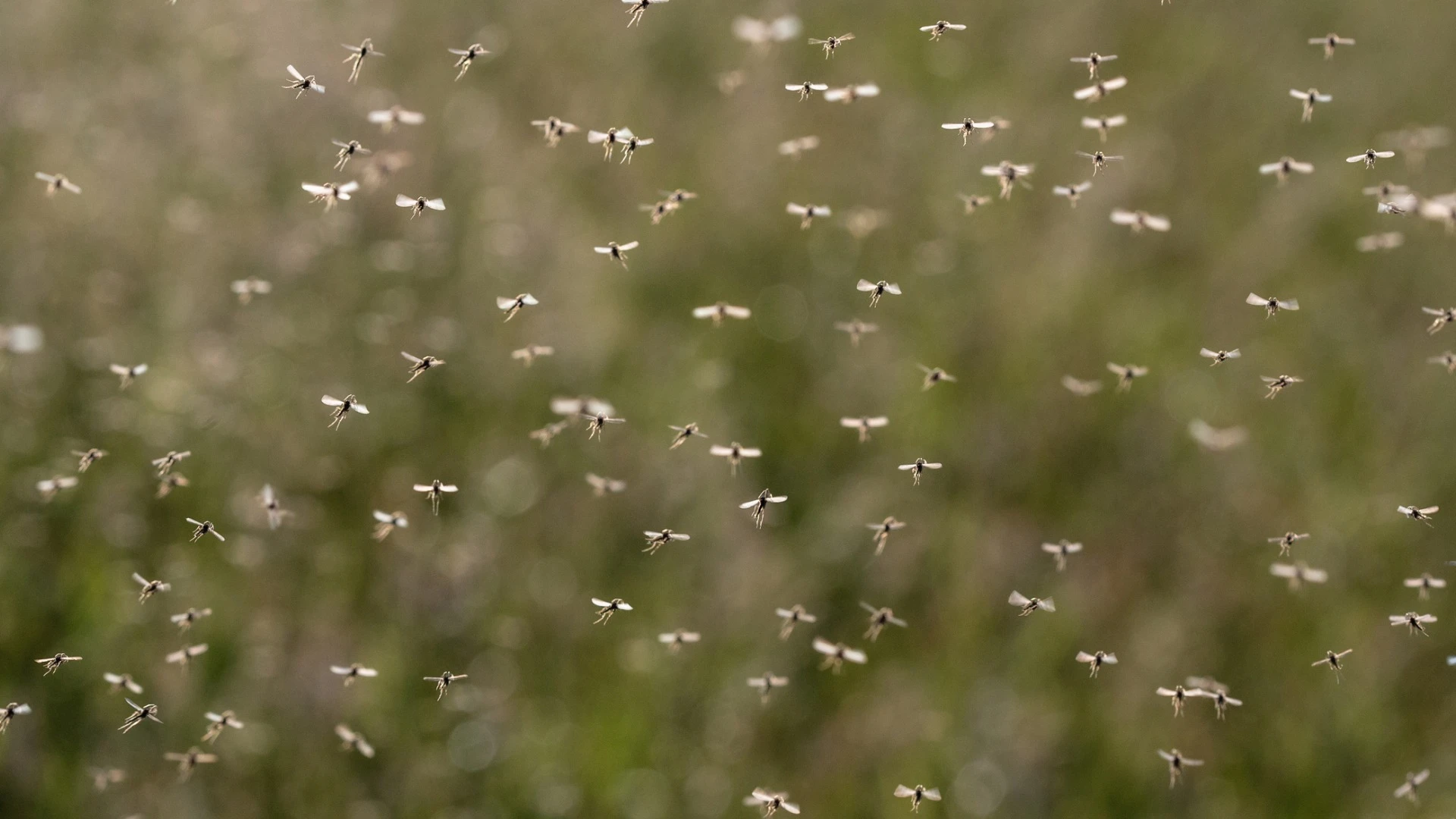
AB: The work that we do is primarily focused on mosquitoes. We work on Aedes mosquitoes, which transmit Zika, and also do some work with Anopheles mosquitoes, which transmit malaria. I've also used CRISPR with Drosophila suzukii, which is a significant agricultural pest that affects our fruit industry, particularly cherries, blueberries, and peaches. We are in the process of putting together a paper where we show that CRISPR-Cas9 works in D. suzukii. Other researchers have used CRISPR-Cas9 in a variety of pests, like the Mediterranean fruit fly.
BE: There are several choices of guide RNA available, such as two-piece cr:tracr or single guide RNA. There is also the choice between synthetic guides, plasmid, or guides generated by in vitro transcription. What type of guide RNA are you currently using and why did you choose it over the other options?AB: We used to generate our own guide RNA using the in vitro transcription system, which worked but it took time and lab effort because somebody actually had to do it. The field is moving very fast and we aim to minimize lab time. The faster things move, the better.
AB: We used to generate our own guide RNA using the in vitro transcription system, which worked but it took time and lab effort because somebody actually had to do it. The field is moving very fast and we aim to minimize lab time. The faster things move, the better.
"In our field where we need things to move really, really quickly, ordering Synthego sgRNA is just the easiest way for us to get guide RNA and we have to put minimal work into it," says Anna Buchman, Research Data Analyst at the University of California, San Diego. "
Then we tried out both Synthego’s sgRNA and cr:tracrRNA from another company in parallel. They both worked for what we were trying to do, but the two-piece system took more time to anneal the two pieces to form the complexes.
We now use modified synthetic sgRNAs from Synthego. We like that for one price we got plenty of the guide for injections, it remained stable, and it was easy. You put in the order using a very user-friendly ordering system. Synthego checks the guide for you to make sure everything looks okay. You get it fast, and all you have to do is add a little bit of water and start using it. And then store it at -20०C for however long you want and keep using it. In our field where we need things to move really, really quickly, ordering Synthego sgRNA is just the easiest way for us to get guide RNA and we have to put minimal work into it.
BE: In your recent PNAS paper, “Synthetically engineered Medea gene drive system in the worldwide crop pest Drosophila suzukii,” you describe how a Medea gene drive can effectively reduce the population of a Drosophila pest species. What would be the next step to make this method of insect control a reality?
AB: That system is a nice proof of principle, but now we have to find a cargo for the Medea to spread. There are several avenues of research that are mentioned in the paper, but the idea is now to tie this gene drive to something useful that could spread to kill the flies. For instance, we could spread a conditional lethal gene through the population that would kill the flies at a certain temperature. When that temperature is reached, then the population would crash.
But we're also developing other tools based on CRISPR for this Drosophila pest. There is a paper that came out of our lab using CRISPR-Cas9 to develop a Precision Guided Sterile Insect Technique, or pgSIT, in D. melanogaster. This CRISPR-based technique is a really efficient way to possibly eliminate any target insect species. We are developing this technique in D. suzukii and mosquitoes too.
BE: Although there is a lot of excitement around gene drives, some people have concerns about their safety and regulation. What are your thoughts on the best ways to introduce gene drives into the wild?AB: I have several thoughts on that. The first one is that we want to make sure that any gene drive we are even thinking of introducing is thoroughly tested under laboratory conditions. We want to work with gene drives in a very safe and contained way so that there are no accidental releases. We need to develop controlled methods so that where there are no "what if’s" about the release of gene drives. We're not releasing any gene drives until we are sure exactly how they work and what they are going to do out in the wild.
I also think that it is critical to tell the public what is going on. We encourage public engagement because genes drives could eventually be released into the environment and the environment belongs to the public. People should know exactly what we are doing and be able to comment and give us feedback.
It is important to present the public with their options. Gene drives can potentially have unintended negative consequences. However, what's worse: the problem or the solution? When we think about the numbers of people that are affected on a daily basis by diseases like malaria or dengue, it seems unethical to have a solution that could help obviate these problems and not use it.
We are very transparent about what we do and publish all of our results in peer-reviewed journals and online. We believe that the gene drive community needs to be forthright about the technology we are developing. The National Academy of Sciences has held a symposium on this topic and proposed some containment measures that we as a field have to abide by. I think utilizing gene drives in a very controlled, thoughtful, tested, and transparent way will be the path forward.
AB: I have several thoughts on that. The first one is that we want to make sure that any gene drive we are even thinking of introducing is thoroughly tested under laboratory conditions. We want to work with gene drives in a very safe and contained way so that there are no accidental releases. We need to develop controlled methods so that where there are no "what if’s" about the release of gene drives. We're not releasing any gene drives until we are sure exactly how they work and what they are going to do out in the wild.
I also think that it is critical to tell the public what is going on. We encourage public engagement because genes drives could eventually be released into the environment and the environment belongs to the public. People should know exactly what we are doing and be able to comment and give us feedback.
It is important to present the public with their options. Gene drives can potentially have unintended negative consequences. However, what's worse: the problem or the solution? When we think about the numbers of people that are affected on a daily basis by diseases like malaria or dengue, it seems unethical to have a solution that could help obviate these problems and not use it.
We are very transparent about what we do and publish all of our results in peer-reviewed journals and online. We believe that the gene drive community needs to be forthright about the technology we are developing. The National Academy of Sciences has held a symposium on this topic and proposed some containment measures that we as a field have to abide by. I think utilizing gene drives in a very controlled, thoughtful, tested, and transparent way will be the path forward.
BE: In your opinion, what area will gene drives make the most significant impact first?AB: I think it's definitely going to be in the area of vector control or pest species control. But in either case, the first uses will be in insects. We now have a precedent for using genetically-modified insects to control vector-borne diseases. For example, Oxitec technology uses genetic-based sterile insect technique (SIT), and we are developing genetically-based SIT and different gene drives as well.
Later on, gene drives may be used to control non-insect pests, like rodents. The first paper on a CRISPR-based gene drive in laboratory mice came out not that long ago. However, I think that this technology is still a little bit behind the work that is being pioneered in insects for the purpose of vector control.
AB: I think it's definitely going to be in the area of vector control or pest species control. But in either case, the first uses will be in insects. We now have a precedent for using genetically-modified insects to control vector-borne diseases. For example, Oxitec technology uses genetic-based sterile insect technique (SIT), and we are developing genetically-based SIT and different gene drives as well.
Later on, gene drives may be used to control non-insect pests, like rodents. The first paper on a CRISPR-based gene drive in laboratory mice came out not that long ago. However, I think that this technology is still a little bit behind the work that is being pioneered in insects for the purpose of vector control.
